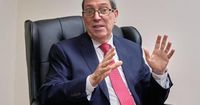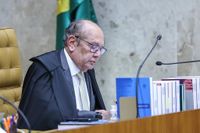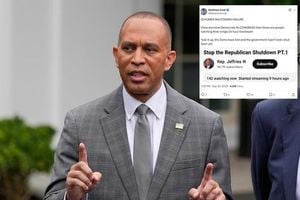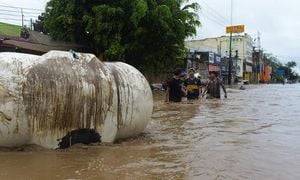The decades-long U.S. embargo against Cuba continues to reverberate throughout the island, with new official reports and heated public debates underscoring the policy’s far-reaching impact—especially on Cuba’s fragile energy sector and its vibrant cultural scene. As the United Nations General Assembly prepares to revisit the issue later this month, the conversation about sanctions, their effectiveness, and their unintended consequences is once again at the forefront of both diplomatic and popular discourse.
On October 2, 2025, Cuba’s Minister of Foreign Affairs, Bruno Rodríguez Parrilla, presented an updated national report detailing the effects of the U.S. economic, commercial, and financial blockade on the country from March 2024 to February 2025. According to Cubadebate, the report revealed a staggering $7.56 billion in material losses during this period alone—a 49% jump from the previous year. The main drivers of this increase? A sharp drop in export income and what Cuban officials describe as relentless financial persecution that makes international transactions nearly impossible.
But the numbers only tell part of the story. Rodríguez Parrilla emphasized that the blockade’s impact is deeply personal, affecting the daily lives of every Cuban and, in his words, “stifling the nation’s socioeconomic development.” Nowhere is this more acutely felt than in the energy sector, which the report identifies as one of the hardest hit. The minister highlighted the emotional toll, stating, “It is not possible to express in numbers the emotional damage, the anguish, the suffering, the deprivations that the blockade generates in the Cuban family.” He added, “Thus it has been for several generations, as more than 80 percent of Cubans on the Island were born after the beginning of said blockade.”
The scale of accumulated damages from the embargo is, frankly, breathtaking. At current prices, losses surpass $170.7 billion, but if valued in gold to avoid fluctuations in the U.S. dollar, the figure balloons to more than $2.1 trillion. For an island nation with finite resources, such figures are more than abstract accounting—they represent lost opportunities, deferred repairs, and a daily struggle to keep the lights on.
Consider the country’s aging thermoelectric plants, a lifeline for millions of Cubans. According to the official report, just five days of the blockade’s financial impact is equivalent to the cost of repairing a single plant, like the Antonio Guiteras in Matanzas or the Carlos Manuel de Céspedes in Cienfuegos—a $100 million price tag. Twelve days of the blockade, Rodríguez Parrilla noted, would cover the entire annual maintenance budget of the national electric energy system, about $250 million. These aren’t just numbers—they’re the difference between rolling blackouts and a functioning grid.
The blockade’s reach is not limited to direct U.S.-Cuba transactions. Its extraterritorial effects were thrown into sharp relief recently when a friendly, industrialized country was unable to supply technical assistance for repairs at the Cienfuegos plant. The reason? The equipment in question contained more than 10% U.S. components, making the transaction a violation of U.S. sanctions. As Rodríguez Parrilla put it, “Five days of the blockade prevent financing the repair of a thermoelectric plant.”
“These measures against Cuba are not an excuse, but rather a deliberate policy of economic strangulation that seeks to generate social discontent and weaken national sovereignty,” the minister concluded, according to Cubadebate. The Cuban government maintains that the blockade is a violation of international law and a fundamental breach of the human rights of its citizens. The debate is set to take center stage at the United Nations General Assembly on October 28 and 29, when member states will consider a draft resolution titled “Necessity of ending the economic, commercial and financial embargo imposed by the United States of America against Cuba.”
Yet, while diplomats argue over policy, a parallel debate is raging among ordinary people—this time over the intersection of art, politics, and sanctions. On October 2, 2025, a survey conducted by CiberCuba found that 52% of respondents believe the U.S. should sanction Cuban artists who perform on the island, arguing that their concerts benefit the Havana regime. The poll, which received over 3,480 votes in just seven hours, also showed that 36% opposed such sanctions, insisting that art should not be punished, while 9% said it depended on the case.
The survey results ignited a firestorm of opinions online. Some questioned why artists were being singled out, asking, “Why is it only the artists who are discussed and not the athletes, Major League baseball players, actors, or businesspeople who engage with the island?” Others argued that “art should not be political, nor should it have boundaries, but for that to happen, communists must drop their double standards and not use art as a dogma or ban those who disagree with their ideology.”
The debate intensified after Republican Congressman Mario Díaz-Balart called on the U.S. Treasury Department to investigate reggaeton artists Dany Ome and Kevincito El 13 for their concerts in Cuba. Díaz-Balart argued that these events could violate U.S. sanctions by generating financial income for the Cuban government. The controversy was further stoked by reports that Raúl Guillermo Rodríguez Castro—grandson of Raúl Castro and head of his personal security—attended one of these concerts. “Sanctions may include fines, travel bans, and even reversing citizenship processes if there were omissions or lies. There are videos, witnesses, and even the regime itself admitting that these concerts benefit their income,” Díaz-Balart told Telemundo 51.
Kevincito El 13, for his part, denied rumors of immigration restrictions, explaining in an Instagram video that his break from a European tour was due to his U.S. naturalization process, not because of sanctions. “We have no legal or immigration issues,” he assured his followers. Meanwhile, the legal teams for both artists have kept quiet, opting not to issue statements until they’ve fully assessed the situation. The U.S. Treasury Department has yet to confirm whether it will open a formal investigation.
This episode has reignited the perennial debate over where to draw the line between art and politics, and what role—if any—U.S. sanctions should play in shaping the cultural life of Cubans. Critics of the sanctions argue that they stifle creativity and punish ordinary people, while supporters insist they are a necessary tool to pressure the Cuban government and limit its sources of revenue.
As the U.N. prepares to revisit the embargo, and as artists, politicians, and everyday Cubans continue to wrestle with its consequences, the question remains: How much longer will this policy define the relationship between two neighbors separated by just 90 miles of sea, but by decades of distrust and division?





